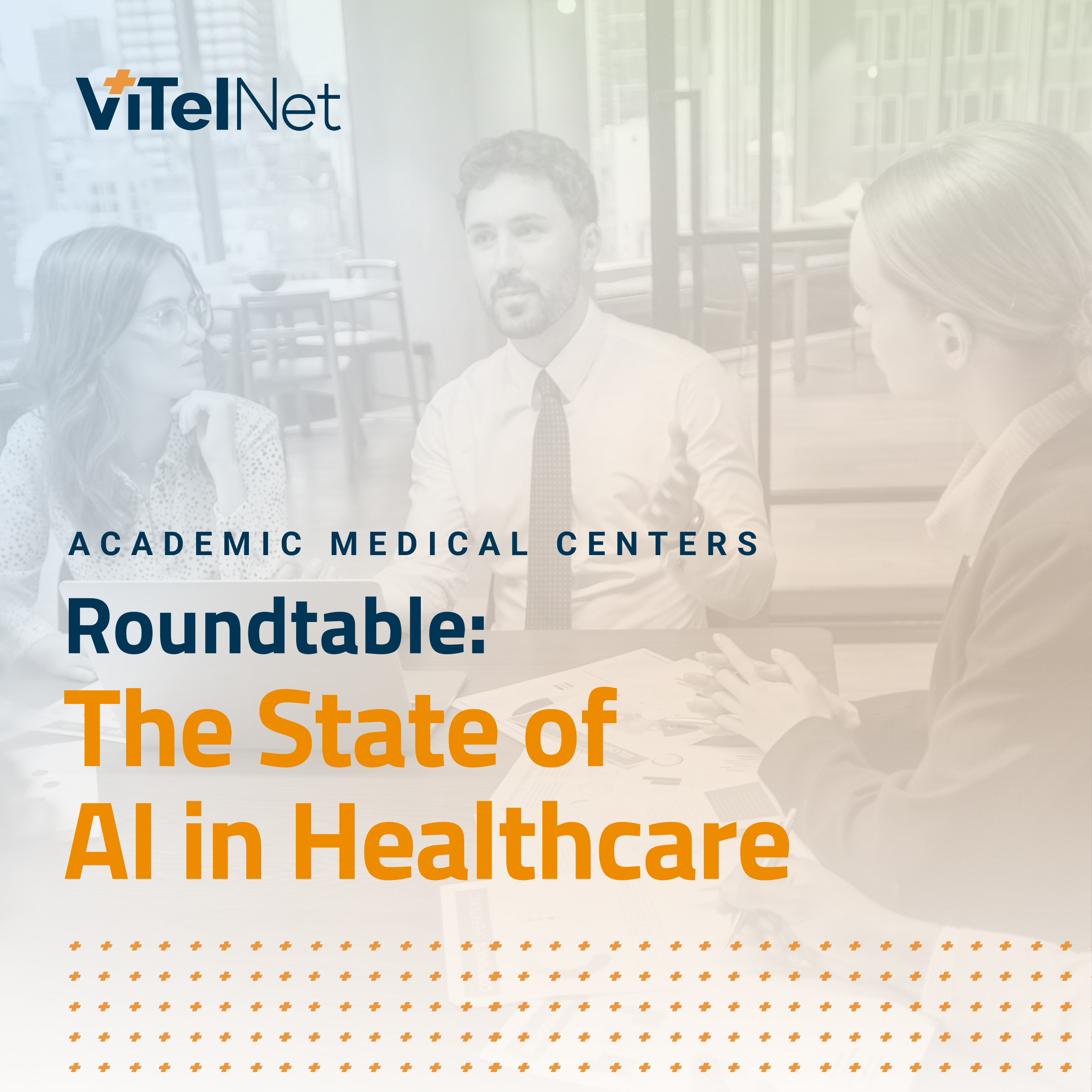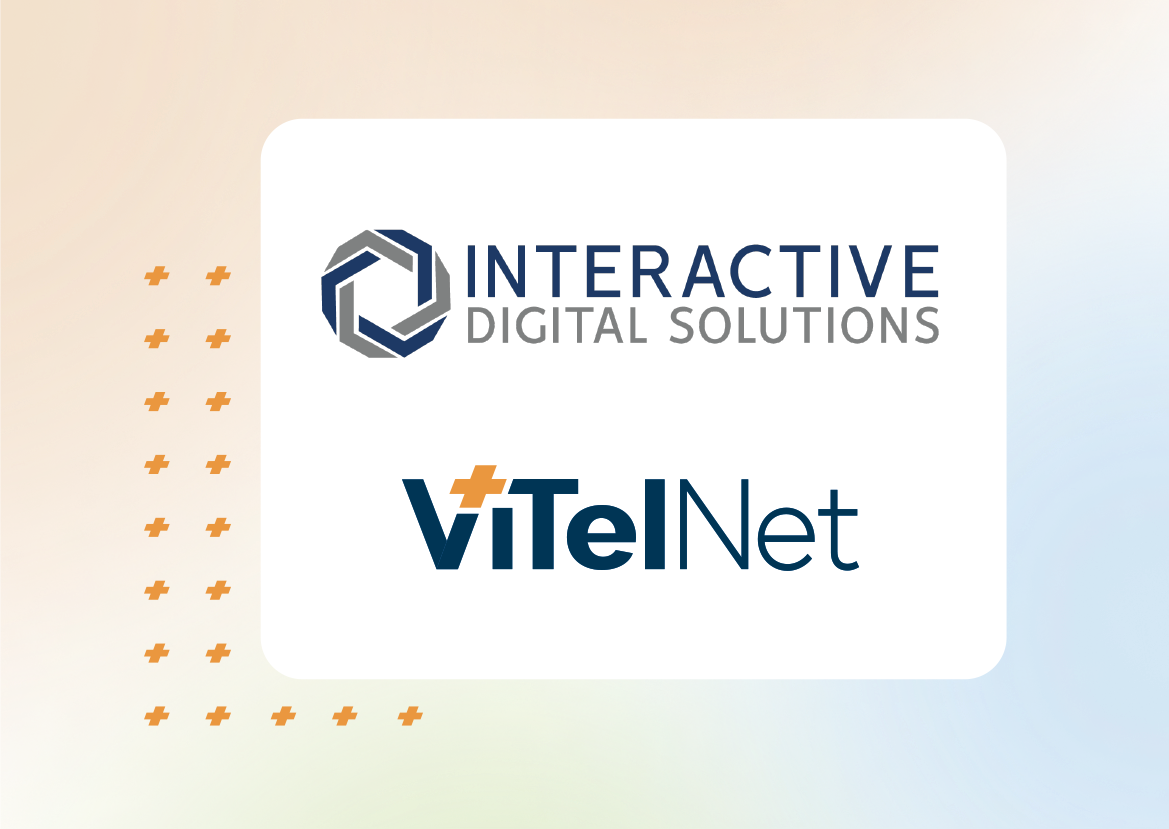ViTel Net regularly hosts peer-to-peer roundtable discussions with leaders from a range of Academic Medical Centers (AMCs) to share experiences, explore opportunities, and brainstorm solutions for their organizations. Over the last 6 months this group has covered a series of topics around regulatory changes, AI, interoperability and more!
Here’s a summary of our recent discussion around AI:
REGULATORY UPDATE
- Hard requirements for AI in healthcare do not yet exist.
- 2025 is the target year for policy recommendations in most states, and in the meantime, many are starting to put forth legislation.
- Most states are pushing for a centralized agency to govern, using periodic audits and assessments.
- At the federal level, there is a focus on transparency, and the need to ensure that AI decision-making weeds out bias and discrimination.
What is allowed:
- Using AI to conduct intake
- Better utilization of provider skill set by leveraging AI as assistive technology
What is not allowed:
- AI is not meant to be a replacement, but rather assistive, with mandatory provider involvement.
- AI may not establish a relationship with the patient without a treating provider’s interaction.
- The use of technology cannot be mandated. Both patient and provider must provide consent.
- Providers may not sign off without having seen the patient.
- Providers may not avoid responsibility for AI suggestions that are deemed harmful. AI is to be treated as a peer-to-peer consult.
PRACTICAL AI IMPLEMENTATIONS TODAY
Kahun Co-Founder and CEO Michal Tzuchman Katz got the conversation started, asking participants to think about the current landscape of AI in virtual care. She shared an overview of the applications for Kahun’s clinical AI engine:
- Kahun is a clinical reasoning engine that captures information from evidence-based literature and offers documentation and decision support, with a focus on efficiency and quality of care.
- Its two main solutions include:
- Chatbot: asking open-ended questions in the beginning, this allows patients to explain in their own words what they’re experiencing. It then narrows in to capture explicit details through structured questions.
- Decision Support: As the conversation continues, the backend engine continues evaluating risk factors and other information, guiding the provider to what questions make sense to ask next.
To make the use cases more tangible, Michal shared a case study with a national primary care provider in the US which leveraged Kahun integrated with their virtual care solution to automate patient triage, resulting in 32% more efficient virtual visits.
QUESTIONS AND ANSWERS FROM THE GROUP
Q: What demographic of patients are successfully adopting these platforms?
A: In a recent case study by Kahun, clients are managing virtual care patients nationwide, spanning pediatrics to adult medicine and encompassing diverse geographical regions, socio-economic statuses, and age groups. In short, the capability delivers value for all patients.
Q: How can we effectively incorporate AI training into graduate medical education?
A: There is an opportunity to first introduce it into a simulation center in schools, which offers a low-risk approach to help document results. Secondly, it could be introduced in clinical areas where clinical students do their residency, with good supervision from faculty.
KAHUN AND VITEL NET
Q: Is Kahun’s system designed to be Epic/EMR adjacent, and can it pull from HIE for patients who may not be loyal to one health system or EHR?
A: The system works with different EHRs, including Epic and smaller ones. The value of the Kahun and ViTel Net partnership is that ViTel Net already has the integrations with those EHRs, such as Epic, Oracle Cerner, Meditech, Altera, AthenaHealth, eClinical Works, VistA and others, which makes it easy to get the data into one place, with the ability to work across multiple applications.
Q: As the Kahun system asks questions, is it focusing on multiple diagnoses? How does it know when to stop?
A: There is an option to ask the patient at the start if there are multiple reasons for this appointment. So, at the beginning of the conversation we identify what type of visit we’re dealing with. The system is consistently checking to see if there is a positive or negative likely ratio of unknown findings that need to be asked, because it will make a significant change in the probability of the list of diseases that are suspected. If the next answer is not important enough, then Kahun stops asking. It knows not to ask irrelevant questions.
Stay tuned for our next AMC roundtable wrap-up, where we’ll explore “Optimizing Operational Models for Tele-Psychiatry at Scale” and share practical insights from industry leaders.
For more information on AI trends in virtual care, visit this recent blog post.






